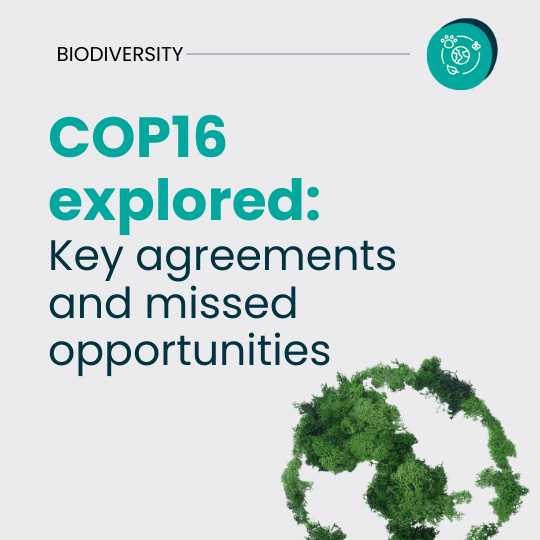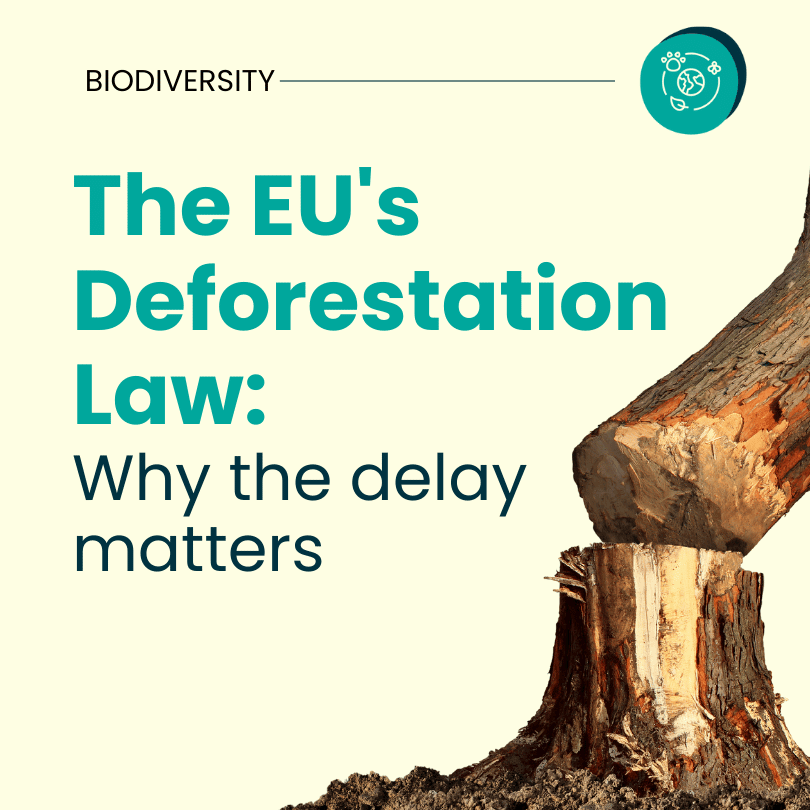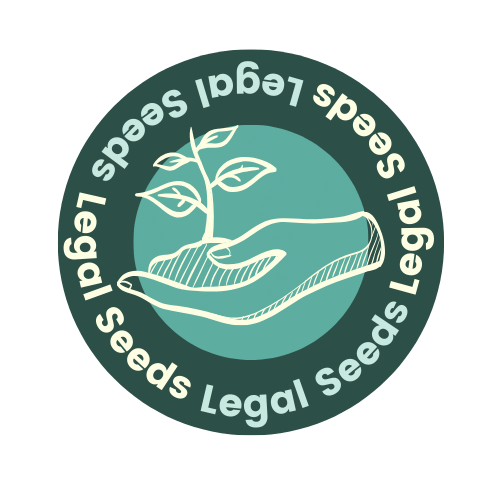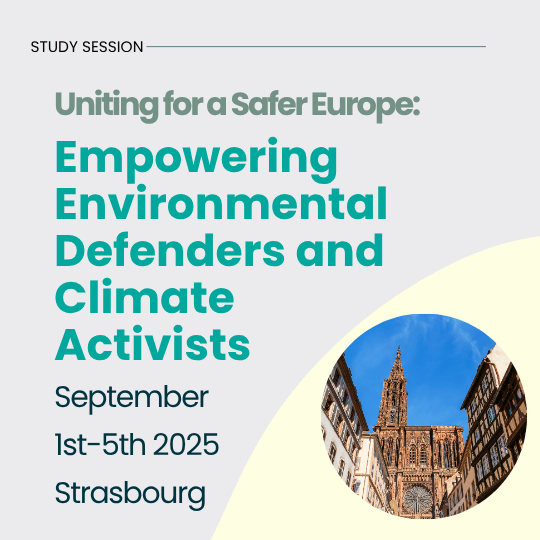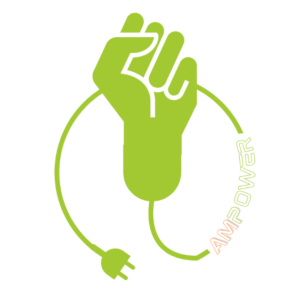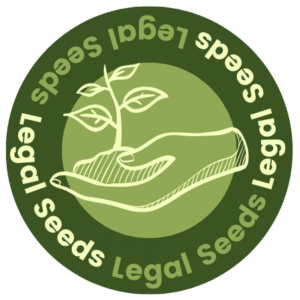
Last year, young activists from Fridays For Futre won Estonia’s first ever climate court case, where the state energy company Enefit was ordered to halt the construction of a new shale oil facility. Despite this, Enefit has been issued another construction permit, and the Estonian youth are going to court again. With this second lawsuit, Estonian climate activists are sending a clear message to Estonia and Europe: fossil fuels must be left in the ground, and youth will fight with all possible means.
Written by

Ronja Karvinen
Share this article
In October last year, Estonia’s supreme court ordered the state energy company Enefit to halt the construction of a shale oil facility. This ruling was the result of a case brought forward by a group of young Estonian climate activists, who in 2020 decided to take the municipality of Narva-Jõesuu to court for issuing a construction permit for the shale oil facility. The group of young people argued that the construction permit was given without adequately assessing its climate impacts and the commitments made under the Paris Agreement, as well as the European Union’s objective to achieve climate neutrality by 2050.
The court ruled that the municipality had assessed the climate impact well enough but not the environmental impact, and revoked the permit. For the first time in Estonia, the Supreme Court stated that the mitigation of climate change is a constitutional obligation.
This is one amongst several recent climate cases in Europe, where especially young people are taking their states to court, for inefficient climate action. In this case, it was Fridays for Future Estonia who stood behind the claim, eventually winning the court case. We have had the chance to speak with some of the young activists behind this case, to learn more about how climate litigation works and why it can be such a powerful tool for climate advocacy:
Last year you won Estonia’s first ever climate court case! What motivated you to use the legal system for your climate action?
We went to court because we ran out of other options and we were not willing to accept the government constructing a new fossil fuel plant amid the climate crisis. We had already presented public appeals, and organised peaceful weekly climate strikes, not to mention online advocacy. Suing the plant was our last option. As long as the rule of law holds, legal action is the only tactic that authorities and businesses can’t ignore.
How did you start the process? What do you need in order to file a climate court case?
First, it is essential to understand the stages of the oil plant’s completion, specifically the stage at which the operation of the plant can be impeded. The oil plant requires several permits, such as the construction permit and the integrated permit. Initially, we successfully contested the construction permit issued to the plant. This time, we are challenging the integrated permit which allows the plant to operate. Legal experts from the Estonian Environmental Law Center helped us find shortcomings in the permits and prepare arguments for both court cases. We submitted two complaints against the integrated permit: one as an environmental organisation under the name MTÜ Loodusvõlu, and another by a young activist in the movement, to protect her rights. Since this time the case also involved issues regarding human rights and children’s rights, we formed a team of multiple lawyers of various backgrounds to cover all necessary areas of legal expertise. The most crucial aspects of initiating a climate lawsuit are finding the right moment in the long chain of decisions to challenge legally, then finding lawyers who are willing to bring an innovative case, and securing funding to pay them.
This year you are filing new complaints to the court, why?
On May 27, 2024, the Environmental Board of Estonia issued an integrated permit to the aforementioned state-owned oil plant, allowing it to operate for the next 10 years. This is the same plant that we already successfully challenged in court once. By issuing the integrated permit, the Board rejected the arguments presented by us and other environmental organisations, urging them to refuse the permit. The plant will produce shale oil, a fossil fuel so polluting that it is not compliant with EU environmental regulations. That is why the oil is exported and used for fuelling long-distance ships, thereby contributing to the export of carbon emissions.
We based our complaints on the following arguments.
- Firstly, by granting the oil plant an integrated permit, the Environmental Board did not sufficiently consider the plant’s climate impact. The plant will increase Estonia’s current greenhouse gas emissions by about 6% and will take approximately 20% of Estonia`s carbon budget, which, in turn, makes it harder to reach our climate goals. Additionally, the measures to mitigate the climate impact are inadequate and largely based on underdeveloped technologies, such as carbon capture.
- Secondly, by granting the complex permit, the harmful effects of the oil shale mining required for the plant’s operation on the natural environment were not taken into account. Groundwater layers and wetlands, including Natura 2000 areas, which are already degraded due to mining, would be damaged.
- Thirdly, there is no overriding public interest in operating the oil plant. It does not create a significant number of jobs, is not highly profitable, and does not ensure our energy security to the extent that we should collectively endure the environmental damage it causes.
- Fourthly, the oil plant exacerbates climate change, which has dangerous consequences for people’s health, including children’s. For many people suffering from chronic diseases, the impacts of climate change are more serious than usual. For example, heatwaves, which have already become more frequent due to climate change, hinder adequate sleep and increase the likelihood of dangerous epileptic seizures.
What is your goal with the new court case?
We hope to revoke the integrated permit for the plant to stop the shale oil plant once and for all. This way we can push Estonia towards a climate-neutral economy and industry. We are trying to show to all fossil fuel enterprises that hope to burn the last of Estonia’s oil shale for rapid profit, that it is not going to be easy for them.
What would be your advice to a group of young people wanting to start something similar? What is the first thing to start with?
The first piece of advice would be to not be afraid. Turning to court, especially against a powerful actor like a large corporation or even the government can feel very intimidating. However, even the youngest and most vulnerable people have the right to a healthy environment, including a safe climate, that states and businesses must respect. The second piece of advice would be to build a team so that you are never quite alone. We have greatly benefitted from working together with legal experts, environmental NGOs, and volunteers, who have all helped us with different skills and support.
How can other young people or youth organisations support your new court case?
You can help us by sharing our messages––international pressure could be an impactful way of pressuring the government to stop the plant. Our main court battles lie still ahead. These may last for several years and are going to be costly. We would very much appreciate if you could donate to help us cover the costs of the case: https://fridaysforfuture.ee/en/what-can-you-do/#donate
More from environmental law
Going to court, again!
https://yeenet.eu/wp-content/uploads/2024/07/Going-to-court-again.png 540 540 YEE https://yeenet.eu/wp-content/uploads/2018/11/logo-yee-728x1030.png YEE2024-07-30 12:13:582024-07-30 12:25:15Going to court, again!Impacts of the European Climate Lawsuits | Webinar
Unpacking the recent ECtHR decisions on climate cases with Victorine Nagels and Theresa Amor-Juergenssen.
Why are we doing this
The European Court of Human Rights (ECtHR) recently delivered decisions on three different climate change-related cases. These were all lawsuits brought forward by citizens across Europe, who argued that states have not done enough to mitigate climate change and to protect their citizens.
By immersing ourselves in discussions on participation, human rights, and environmental protection, we aim to ensure that the voices of young people are integral in shaping policy recommendations, as well as to create a platform where your insights and contributions can drive tangible change, fostering a global community dedicated to environmental advocacy.
In this webinar, one month after the historic decisions, we will unpack the results of the three different climate lawsuits brought forward to the ECtHR:
- KlimaSeniorinnen v Switzerland
- Carême v France
- Duarte Agostino and Others v Portugal and 32 Other States
Who will be speaking
Have questions? Get in touch!
Impacts of the European Climate Lawsuits | Webinar
https://yeenet.eu/wp-content/uploads/2024/05/IMPACTS-OF-EUROPEAN-CLIMATE-LAWSUITS.png 540 540 YEE https://yeenet.eu/wp-content/uploads/2018/11/logo-yee-728x1030.png YEE2024-05-03 13:13:052024-05-28 15:52:42Impacts of the European Climate Lawsuits | WebinarPractical information
-
When
Friday 9th February 2024 at 16h CET
-
Where
Online
-
How
Register your interest
Share This Event
Presenters:
Youth and Environment Europe (YEE), World’s Youth for Climate Justice (WYCJ), Auroramålet, Victorine Nagels (lawyer)
Presentation by WYCJ: The World’s Youth for Climate Justice is an international youth-led campaign that aims to bring climate change to the ICJ. Among others, we will discuss how we can all join forces in this last stage before the submission.
Presentation by Auroramålet: Auroramålet represents 300 young people who have sued the Swedish state for insufficient climate action. We will discuss why we have chosen human rights-based climate litigation as a tool for climate justice, and what we have learnt that could make it easier for others to do the same. This talk will cover how we manage legal strategy, funding, communications and advocacy with limited resources.
Presentation by YEE: We will discuss and present what are National Energy and Climate Plans (NECPs), and why it is important for youth to provide feedback and actively participate in them.
Presentation by Victorine Nagels: We will hear from a young lawyer involved in defending young climate activists. Questions for the discussion include: which young people can take legal action and what are the risks? Is the situation different when young people act through an association? What are the situations in which it might be worth taking legal action? What happens when young people have to defend themselves in court?
Have questions? Get in touch!
Other upcoming events
Climate Litigation As a Tool for Youth Climate Movements
https://yeenet.eu/wp-content/uploads/2024/02/CLIMATE-LITIGATION.png 675 675 Eva Kloudová https://yeenet.eu/wp-content/uploads/2018/11/logo-yee-728x1030.png Eva Kloudová2024-02-05 17:20:302024-02-21 16:48:02Climate Litigation As a Tool for Youth Climate MovementsPractical information
Share This Event
Are you interested in a campaign to mobilise youth in the NECPs processes?
During the session, attendees will have the opportunity to learn more about the campaign and how they can get involved. The YEE Environmental Law team will provide an overview of the NECPs processes and explain how young people can participate in them.
About NECPs
NECPs, or National Energy and Climate Plans, are an important part of the EU’s efforts to combat climate change. They set out each member state’s targets and policies for reducing greenhouse gas emissions, increasing renewable energy, and improving energy efficiency.
Have questions? Get in touch!
Other upcoming events
National Energy & Climate Plans | Webinar
https://yeenet.eu/wp-content/uploads/2024/01/National-Energy-and-Climate-Plans.png 1080 1080 YEE https://yeenet.eu/wp-content/uploads/2018/11/logo-yee-728x1030.png YEE2024-01-09 13:59:232024-01-26 11:54:50National Energy & Climate Plans | WebinarYEE's Summer Camp on energy policy and environmental law
Understand issues related to the energy transition and environmental law, and strengthen the capacity of local organisations to push for more ambitious environmental agendas at the local level.
Application deadline: 2nd June 2023YEE's Summer Camp
Understand issues related to the energy transition and environmental law, and strengthen the capacity of local organisations to push for more ambitious environmental agendas at the local level.
Application deadline: 2nd June 2023
We do not accept applications anymore.
Practical information
-
When
12 to 16 July 2023
-
Where
Olomouc, Czechia
-
How
Register your interest
This event is part of the Legal Seeds 2 and AmPower projects
Share This Event
What you can expect from the training
- sessions on: the potential energies of a carbon-free future, the link between green transition and human rights, and the role of climate litigation and more!
- an opportunity for you to introduce your organisation and its actions, while hearing from other youth across Europe
Who can apply?
Anyone between the age of 18 and 30 with a keen interest in environmental and energy policy issues
The participation of young people and citizens of Germany, the Czech Republic, Slovakia, Hungary, Poland, Denmark and Finland will be prioritised, although applications are not geographically limited.
Join our fully funded training opportunity
During the event, YEE will cover accommodation (in a hotel near the city centre of Olomouc, in twin bedrooms), breakfast, 4 lunches and 4 dinners and some coffee breaks. Travel costs will be reimbursed by YEE for up to 200 euros per person (with a possible extension for people travelling from further destinations).
Have questions? Get in touch!
Other upcoming events
YEE’s Summer Camp on energy policy and environmental law
https://yeenet.eu/wp-content/uploads/2023/05/YEEs-Summer-Camp-on-ENERGY-POLICY-ENVIRONMENTAL-LAW.png 810 810 YEE https://yeenet.eu/wp-content/uploads/2018/11/logo-yee-728x1030.png YEE2023-05-22 17:50:322023-07-28 13:34:33YEE's Summer Camp on energy policy and environmental lawAdvocating for stronger legal protection of rivers in Europe
Why up to 60% of European water bodies are highly polluted?

Rivers – anywhere you are in Europe, there must be a river not far from you. Ancient Greeks would marvel at rivers like Gods. How have we now come to a point in which up to 60% of European water bodies (including rivers) are highly polluted?
River Health
The health of water bodies constitutes a major determinant for human food and water quality, which demonstrates how human health is inextricably tied to healthy water body habitats. Rivers, in particular, constitute mobile water bodies which cross vast swathes of Europe while exchanging water, materials, energy and nutrients with their surroundings. Therefore, even though they make up a small percentage of surface freshwater, they have a significant influence on European habitats and their conservation status.
Pollution
Like other surface water bodies, rivers are affected by multiple sources. Point source pollution for example is any identifiable source of pollution, such as wastewater. Its disposal in rivers leads to a high concentration of toxic chemicals, such as cyanide, zinc, lead and copper. Then, diffuse source pollution results from the collective run-off of water used by human activities, particularly in agriculture. It increases the concentration of nitrogen and phosphate in water bodies, which are likely to trigger eutrophication, a situation which adversely threatens biodiversity due to an increased load of nutrients present in the water. Lastly, there are hydromorphological pressures, such as barriers, which may result in habitat alterations which have a series of cascading consequences ranging from higher water temperatures to reduced species’ migration.
Water pollution can have grave consequences for the environment. The safety of drinking water can be jeopardised, entire food chains can be disturbed and there is a likelihood of disease spread (e.g. typhoid, cholera, etc…).
The Water Framework Directive
The European Union, in response to the unfavourable status of water bodies, introduced Directive 2000/60/EC – the Water Framework Directive (WFD) – in 2000.
The purpose of the WFD is “to establish a framework for the protection of inland surface waters, transitional waters, coastal waters and groundwater” (Article 1). Through the Directive, the EU, therefore, wishes to promote sustainable water use, enhance the protection of aquatic ecosystems, and ensure the progressive reduction of pollution. Member states are required under Article 4 to issue River Basin Management Plans (RBMPs) every 6 years, detailing how they will achieve a good water status. A deadline for publishing RBMPs was originally set for 2015; nevertheless, Article 4(4) provided for the possible extension of the deadline to 2027, which includes two more cycles of RBMPs.
For surface waters – like rivers – good status is dependent on a good ecological and good chemical status. The WFD also specifies that when natural circumstances do not allow a good status to be reached (Article 4(4)), or if the restoration is unfeasible or disproportionately expensive (Article 4(6)), an exception can apply to achieve a good water status. Nevertheless, no deterioration of the status is legally acceptable.
As of 2023, most MS have had difficulty realising the ecological ambitions of the WFD. Furthermore, according to countries’ RBMPs covering the period up to 2015, good or better ecological status has been achieved for only around 40% of surface waters. The following section will examine the progress (or regress) of the WFD in more detail.
Challenges to the Water Framework Directive
With only four years left to meet the – extended – WFD deadline, the good status targets seem unlikely to be achieved. A study by the Living Waters Europe Coalition revealed that 90% of river basins studied around the EU will fail to reach the criteria specified in the WFD by 2027. In the same vein, a news headline by WWF revealed that “Europe’s rivers [are] nowhere near healthy by [the] 2027 deadline”. It is also noteworthy that a great deal of the water bodies which presented a good water status in 2015, already had the status before the adoption of the WFD.
Moreover, in September 2021, at least nine MS had still not presented their draft plans for all river basins, and RBMPs studied by WWF and the Living Rivers Europe demonstrated that there has been insufficient funding by MS for the Directive’s implementation. Giakoumis and Voulvoulis (2018) reveal that although the plan is fit for purpose, socioeconomic contexts and the MS’ institutional settings have restricted the opportunities the WFD has brought to the table. This means that these countries will fail to fulfil legally binding requirements.
More articles

Rivers – anywhere you are in Europe, there must be a river not far from you. Ancient Greeks would marvel at rivers
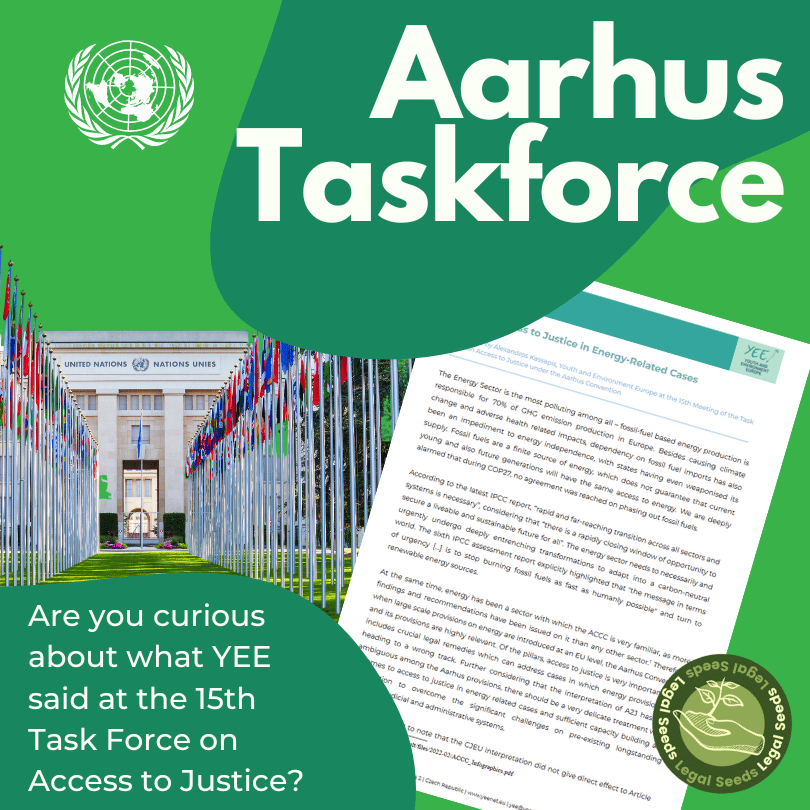
The Environmental Law Team of YEE actively participated in the 15th Task Force on Access to Justice in Geneva, sharing valuable insights.

The discussion within the EU around the Fit For 55 legislative package is at the core of the EU’s current action on
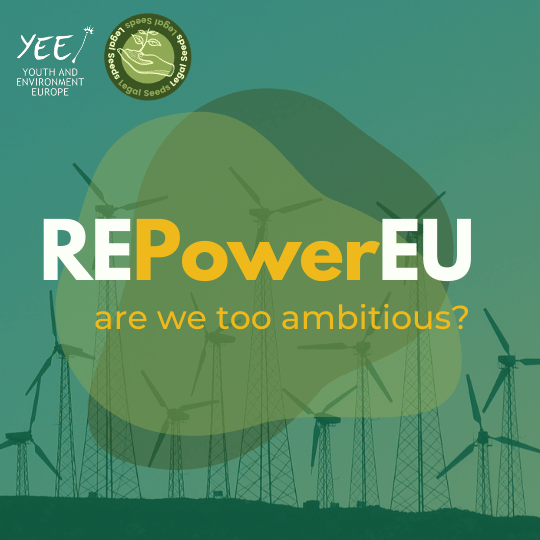
If exiting from the Russian fossil fuels, gas and coal import is a necessity, should it be then done at all costs?
More To Explore
Advocating for stronger legal protection of rivers in Europe
https://yeenet.eu/wp-content/uploads/2023/05/1-3.png 810 810 YEE https://yeenet.eu/wp-content/uploads/2018/11/logo-yee-728x1030.png YEE2023-05-18 09:44:322023-06-23 09:17:11Advocating for stronger legal protection of rivers in Europe
Written by

Ronja Karvinen
What did we ask?
Visual summary










Share this article
Climate litigation is becoming a hot topic, following an upsurge of legal mobilisations globally. In several countries citizens have come together to sue their states for insufficient climate action, and legal mobilisations have opened up new ways to demand climate justice from those in power. A large share of the lawsuits brought forward are driven by young people, who are suing their states for threatening their future human rights. Examples of recent youth driven climate lawsuits include Juliana v. United States, Duarte Agostinho and Others v. Portugal and Others and Soubeste et. al v. Austria et. al.
We had the opportunity to speak to three young people from the organisation Aurora, who are behind an ongoing climate lawsuit in Sweden. On November 25th 2022, Aurora filed a lawsuit against the Swedish state for insufficient climate policies. More than 600 children and youth are behind the lawsuit, including Swedish climate activist Greta Thunberg. The youth are condemning Sweden’s climate policies to be illegal, as the targets set by the Swedish state are too slow and insufficient, while the previously set climate targets remain unachieved. Aurora is thus claiming that Sweden is not treating the climate crisis like a crisis.
The district court of Nacka (a town in Sweden where the lawsuit was filed), considered the claims to be clear enough to be tried in court. On the 21st of March 2023 the Nacka District Court issued a summons, upon which the Swedish state will have three months time to respond to the case. The case is treated as a class-action lawsuit, meaning that a large group of people in Aurora will be represented by a few members of the organisation. The Swedish state on the other hand will be represented by the Chancellor of Justice.
We will now hear from three young people from Aurora: Agnes Hjortsberg (21), Anton Foley (20) and Ida Edling (23), who will share their experiences of filing a lawsuit as a group of young people.

Agnes Hjortsberg

Anton Foley

Ida Edling



What breaches are you suing Sweden on?

Ida
The legal provisions that we say the state has violated is human rights under the European Convention of Human Rights. So we're saying that the Swedish state's lack of sufficient climate measures threatens young people's human rights in the future. We're talking about the human right to life, to health, to dignity, to well-being, to home and to property. And that's Article 2, 3, 8 and 14 of the European Convention of Human Rights - and it's the first article of the first protocol of the European Convention of Human Rights.
How did you start this process?

Anton
A lot of the inspiration to do this came from people who had already done it in other countries. A natural first step, or one of the first steps, was to reach out and make contacts: at the very early stages we had calls and meetings with lawyers and activists who had pursued similar cases in for example Norway, the Netherlands and France. We learned from them both legally how we should approach it, but also how we should approach it organizationally, financially and from a media perspective. And then as we came to terms with what kind of case we wanted to run, or how we should do it, we also had close contact with international climate litigation groups, to sharpen our arguments and learn from their cases. Thus, I'd say there have been two waves of work: The first one is just about figuring out what is going on and how we should do this. And then secondly, once we had it more figured out, on the legal and technical side, we could focus on sharpening the arguments.
What type of competences are needed to file this type of lawsuit?

Agnes
In Aurora as an organisation, almost none of the youth and children had any knowledge of how to do something like this from previous experience. Of course, we have law students who manage a lot of the law stuff, but when it comes to funding, media and social media, or how to run an organisation and how to take care of each other, it's something we learn as we go.

Anton
And we've collected a network of professionals and people who know what they're doing in lots of different areas. For example: legal experts, climate scientists and public relations people to help us figure out how to get our message out there. But also a lot of climate activists helped us figure out what our actual aims are. Because there are lots of ways you could structure this legally, but not all would be desirable for what we actually want to achieve. Thus, “where are we going” is the first question we need to answer. Then, “what do we want to achieve? “ and thirdly “how can we use law as a tool to achieve that?”

Ida
I think that the way we have decided to structure our work within the Aurora case is quite unique. And we've heard that from people who have worked with many different climate cases in other countries too, that our work culture is original because we have a very mixed work culture. We are completely led by youth who have no particular academic background, but who are firmly rooted in what we're actually trying to do. Like Anton was saying, the direction we're actually headed in. And then on the same decision making level or level below even, we have the actual competences. So this democratic way of working together from different age groups and different competence levels is unique I think, and has proven to be very dynamic and successful for us.
What would be your advice to a group of young people wanting to start something similar? What is the first thing to start with?

Agnes
One thing we've begun doing is creating a network of youth doing this all over the world. For example we have contacts in Norway, South Korea, Austria, and the Netherlands. I think one of the first steps is to reach out to one of those groups. We've had meetings with new groups, but we have also been the new group in other meetings. I think using the platforms and networks available is a good tool.

Anton
Yeah, and I think in general, if you're young and you want to make a difference in this or any social or environmental cause, the most important thing to do is to start from where you are and use whatever expertise, interest and platform you have available to you. And if you have a big idea, just go for it! We were just a group of people who thought this would be a cool thing to do and then we started talking to people who knew what they were doing. And then it took a while but over time we assembled this sort of group. And I think that, it sounds very cliche, but just do it, go for it and see where you end up. Nobody thinks they're going to start a global movement when for example deciding to school strike. You just do it because it's the right thing to do and then people sort of catch on. So, I think that wherever you are, start affecting change in your community and whatever spaces you are active in, in school, student unions, trade unions, religious groups, and wherever else you are active. Just start making a difference and speaking up in those circles and then see where it takes you.

Ida
Yeah, educate yourselves, take action and then take inspiration and learn from those who have done similar things before you, because you don't have to reinvent the wheel! The three steps that we advise other youth groups to take, if they also want to sue their states, is to: First find each other and then find competence, find lawyers and scientists, and then find money. Because you will need money. But also remember that all types of legitimate action is vital for sufficient climate action. So, litigation is one way but every other way is also valuable.
How can other young people or youth organisations support Aurora?

Ida
The first thing is to do what you're doing, continue to raise awareness of the climate crisis, continue to push for urgent action in the climate crisis, continue to try to make people in power see that the way we use Earth today is dangerous and won't last. And try to change that in a way that you're already doing, because that will help us all. We're one movement trying to achieve climate justice and everyone needs to do it in their way and every legitimate way is valuable. But then if you concretely want to help our particular cause, we are always in need of money, because holding the state accountable for violations of human rights is very, very expensive in Sweden. And so this would not have been possible without extensive economic support from the public, and here every contribution matters.

Agnes
And also if you're a youth in Sweden and you are interested in Aurora, you can also join Aurora! We always need more people!
More To Explore
How to Sue a State
https://yeenet.eu/wp-content/uploads/2023/05/1.png 675 675 YEE https://yeenet.eu/wp-content/uploads/2018/11/logo-yee-728x1030.png YEE2023-05-11 12:01:402023-07-28 13:15:46How to Sue a State
The Environmental Law Team of YEE participated in the 15th Task Force on Access to Justice, which took place in Geneva from 4 to 5 April 2023. During the meeting, Emma and Alex delivered their statements, contributing to the exchange of information and best practices regarding the implementation of the Aarhus Convention’s access to justice pillar.
The purpose of the meeting was to facilitate the exchange of information, experiences, and best practices related to the implementation of the Convention’s access to justice pillar. The focus of the meeting was on access to justice in cases concerning climate change and biodiversity protection, with discussions covering current trends, barriers, challenges, good practices, and innovative approaches in these areas.

Summary of Emma’s statement regarding the tools to promote Access to Justice
The latest IPCC report emphasizes that climate change will mainly impact children and young people, highlighting the need for long-term considerations and intergenerational equity in environmental legislation. Young people also face challenges in exercising their rights under the Aarhus Convention. The Aarhus Convention is important for environmental democracy, granting the public rights in environmental matters to protect the rights of present and future generations. Strengthening multi-stakeholder dialogue can ensure easier youth access to decision-making processes and hold institutions accountable.

Summary of Alex’s statement regarding Access to Justice in energy-related cases
Dependency on fossil fuel imports hampers energy independence and is finite, posing a threat to future generations. The Aarhus provisions play a crucial role in ensuring that energy supply in the EU has a positive impact on nature and communities. However, legislative proposals may impede access to justice in energy-related cases, prioritising renewable energy development over environmental protection and community engagement. The Aarhus rights, including access to justice, play a crucial role in promoting renewable energy, environmental protection, and public participation.
Learn more about the Aarhus Convention
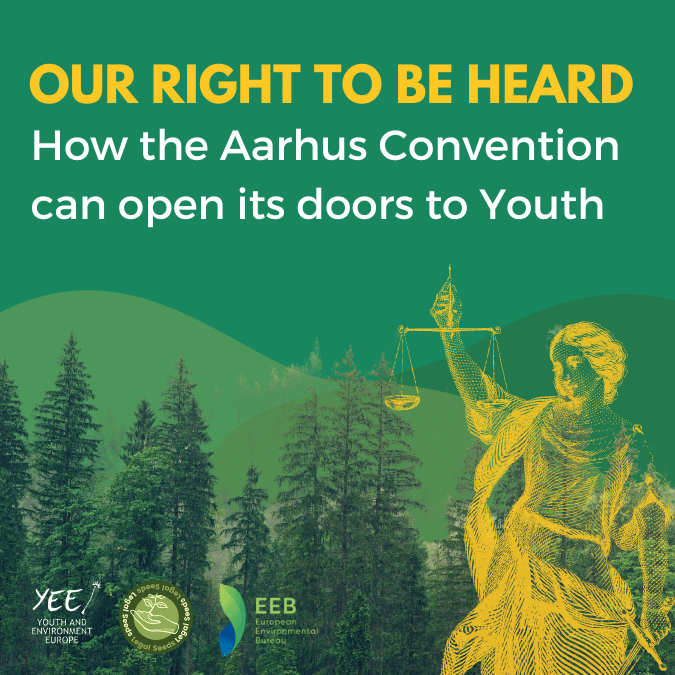
Why Aarhus State Parties fall short of their obligation to guarantee the right to public participation of young people in environmental decision-making?
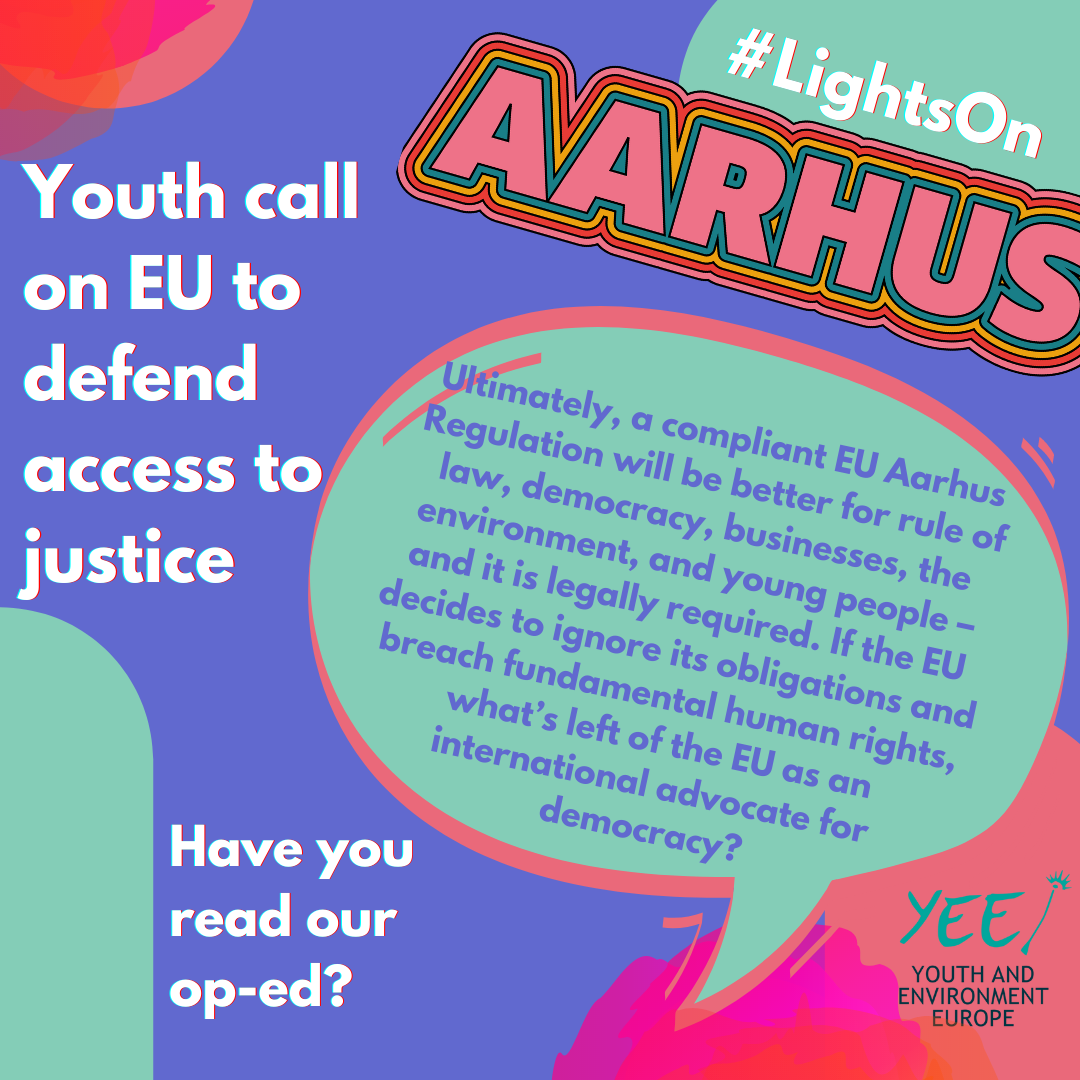
The EU is in breach of its obligations under the Aarhus Convention. Young people all over Europe are joining civil society organizations
More To Explore
15th Task Force on Access to Justice | Statements of the Environmental Law Team
https://yeenet.eu/wp-content/uploads/2023/08/15th-Aarhus-Taskforce-Access-to-Justice.png 810 810 YEE https://yeenet.eu/wp-content/uploads/2018/11/logo-yee-728x1030.png YEE2023-05-01 14:40:002023-08-01 15:22:3315th Task Force on Access to Justice | Statements of the Environmental Law Team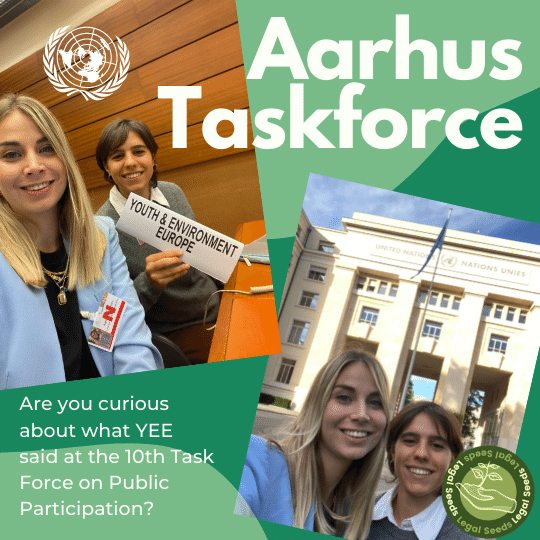
10th Task Force on Public Participation in Geneva
https://yeenet.eu/wp-content/uploads/2022/10/Aarhus-Taskforce.png 540 540 YEE https://yeenet.eu/wp-content/uploads/2018/11/logo-yee-728x1030.png YEE2022-10-27 16:29:022023-03-31 15:02:0910th Task Force on Public Participation in Geneva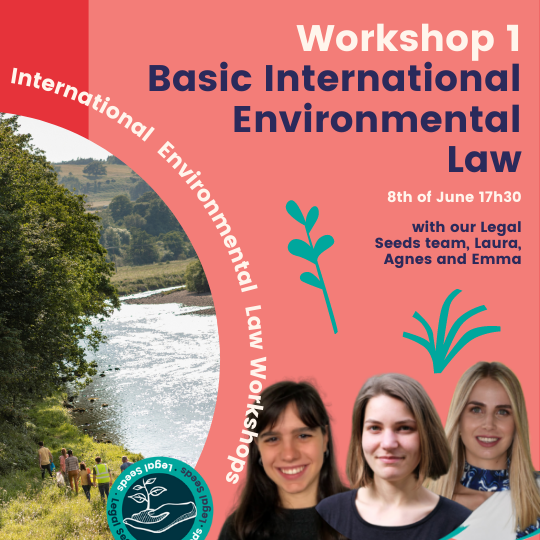
Basic international environmental law | Workshop | Legal Seeds
https://yeenet.eu/wp-content/uploads/2022/06/Env-Law-Template8.png 540 540 YEE https://yeenet.eu/wp-content/uploads/2018/11/logo-yee-728x1030.png YEE2022-06-02 18:58:482023-07-21 10:28:10Basic international environmental law | Workshop | Legal SeedsPortfolio Items
Our mission
 YEE aims to unite environmental youth non-profit organisations in Europe in order to enhance international cooperation, increase knowledge about the climate crisis, raise awareness of environmental problems and to strengthen participation of youth in environmental decision-making.
YEE aims to unite environmental youth non-profit organisations in Europe in order to enhance international cooperation, increase knowledge about the climate crisis, raise awareness of environmental problems and to strengthen participation of youth in environmental decision-making.
Get in touch
Vinohradská 2165/48
120 00 Praha 2 – Vinohrady
Czech Republic
E-mail: yee@yeenet.eu


Financially supported by the European Youth Foundation of the Council of Europe. The views expressed do not necessarily reflect the official position of the Council of Europe






